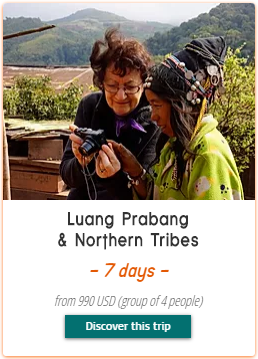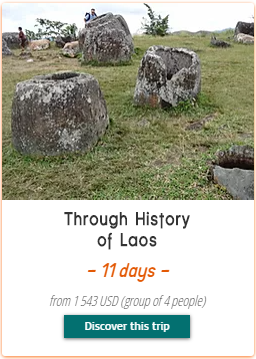Miens & Lantens, members of the Yao ethnic group in Laos
- Charly Renaudin

- Mar 11, 2016
- 3 min read
Updated: Jul 23, 2020
The Yao are an old and widely distributed ethnic group with dozens of subgroup. Only two of them live in Laos: the Mien and the Lanten.
What are the origins of the Yao ethnic group ?
It is believed that the ancestors of the Yao lived in China 4 000 years ago. The main subgroup and the one living in Muang Sing are the Mien The migration of the Yao from their place of origin, China, has been caused by infertile land, but also by expansion of the opium trade and the reprisals of the Chinese government against hill tribe people.
How is Yao society organized ?
The Mien do not produce their own silk or cotton, but they are masters in the art of dyeing, embroidering and sewing their distinctive costumes. They cultivate the rice, supplementing their diet with different kinds of secondary crops. The Yao in general are famous for cultivating opium poppies, but have been forced to give it up by the Laos government’s opium eradication program.
Mien villages are usually very small, from 15 to 60 houses. Similar to the Hmong, they build their houses on the ground and these houses normally consist of three to four rooms.
Yao society is strongly patriarchal in its organization. The husband is the absolute commander of the family. Traditionally, they were polygamous (men tended to have six to seven women) and favored large households. Nowadays the trend goes towards monogamy. To add labor power to their household, they sometimes adopt children from other ethnic groups, paying their parents, so that the Yao communities adopted children make up a fifth of their total population.
What are the beliefs of Miens ?
The mainstream religion of the Mien is still uncertain and a matter of controversy. Some anthropologists consider it a complex system of animism, ancestor worship and an ancient form of Taoism. Mien Taoism included guardian spirits for the family, which protect them against all kinds of evil spirits, disease, misfortune, etc. Women participate in religious activities to full extent.
How are the funerals in the Mien communities ?
Funeral service is a complex and expensive event in Mien communities. Funerals normally last for three days. Silver is placed in the mouth of the deceased. After the body is washed and the hair is cut, the dead person is placed on a bier in front of the ancestral altar. Relatives and friends, wearing white stripes of cloth around their head, meet for prayers. The body is then buried in a coffin unless the person died in an accident or due to other unnatural cause, then the body is burnt.
Mien traditonal clothing
Mien women wear a large turban, trousers and a long robe girdled by sash, the entire costume in dark blue or black, which sets off a bushy fringe of red yarn sewn around the neck and down the front of the robe. Women wear ornaments of silver, including necklaces, rings and bracelets. Silver is the symbol of wealth and status. A popular display of wealth is to cap a tooth with gold. On special occasions, such a New Year and weddings, the women wear a very elaborate headdress, which spreads over the large turban. Mien women are masters in the art of dyeing, embroidering and sewing their distinctive costumes. They also produce elaborately designed shoulder bags.
Traditionally, Mien men wear shorts, loose jacket with fitted sleeves fasten at one side of the collar. Beneath the jacket, they wear a pair of dark blue trousers. There may be a few silver buttons and embroidery on the hems, but men clothing is generally very plain in comparison to that of women.
Lanten traditional clothing
Lanten women's costumes consists either of a long-sleeved plain blue indigo jacket and plain blue indigo wide trousers or long-sleeved blue indigo long jackets, reaching down to the knees and white gaiters, which cover the legs from the knees down to the ankles. In both cases, they decorate the front of their body with violet embroidered cotton strings that hang down from the neck to the waist. Further, they decorate themselves with solid silver necklaces and French silver Piastres from colonial times, or a finely made rectangle silver arrangement on top of their hair bun. Lanten women shave their eyebrows and part their hair above the forehead. They wear their hair either open or cover it with a plain dark blue handkerchief.
Lanten men wear long pants and dark blue vest, sometimes with violet strings sewn along the hems and a narrow cap, attached with several silver Piastres.

























Comments